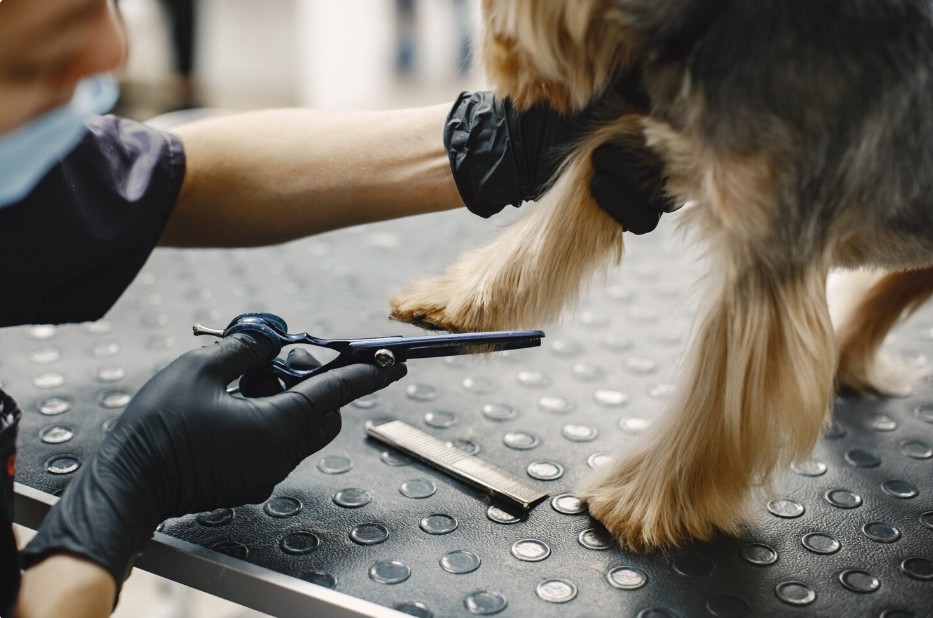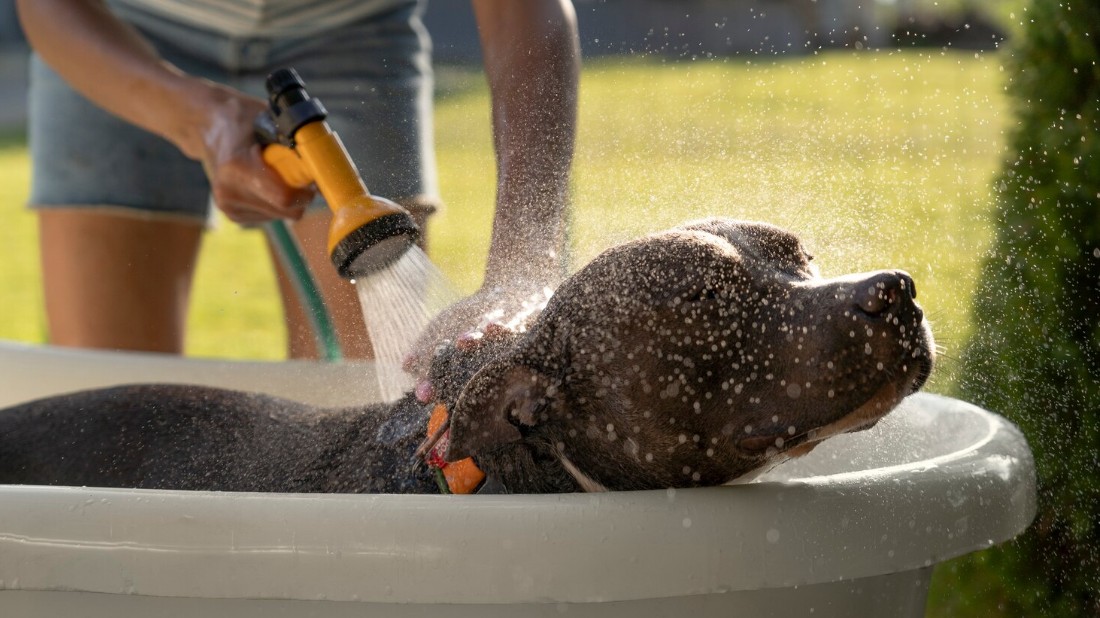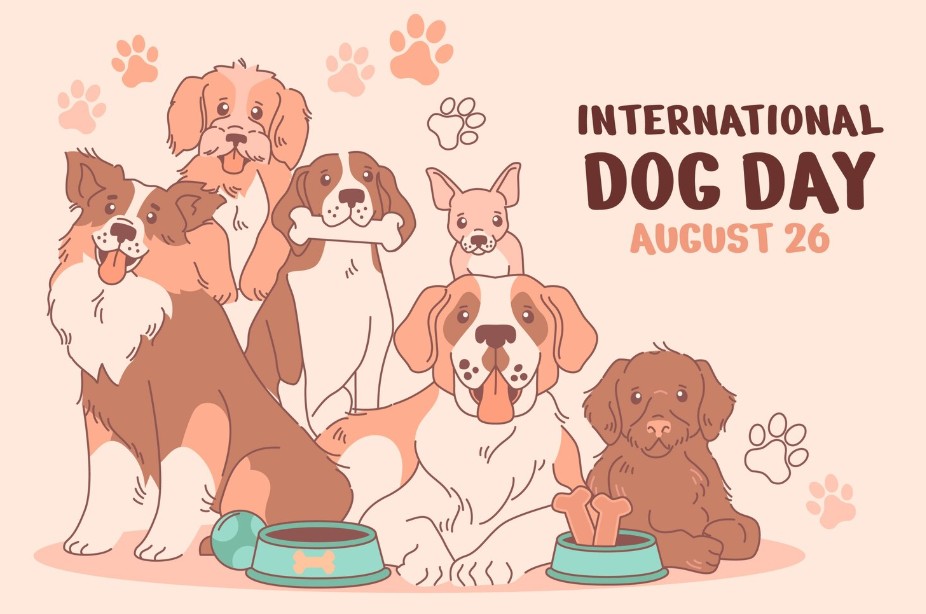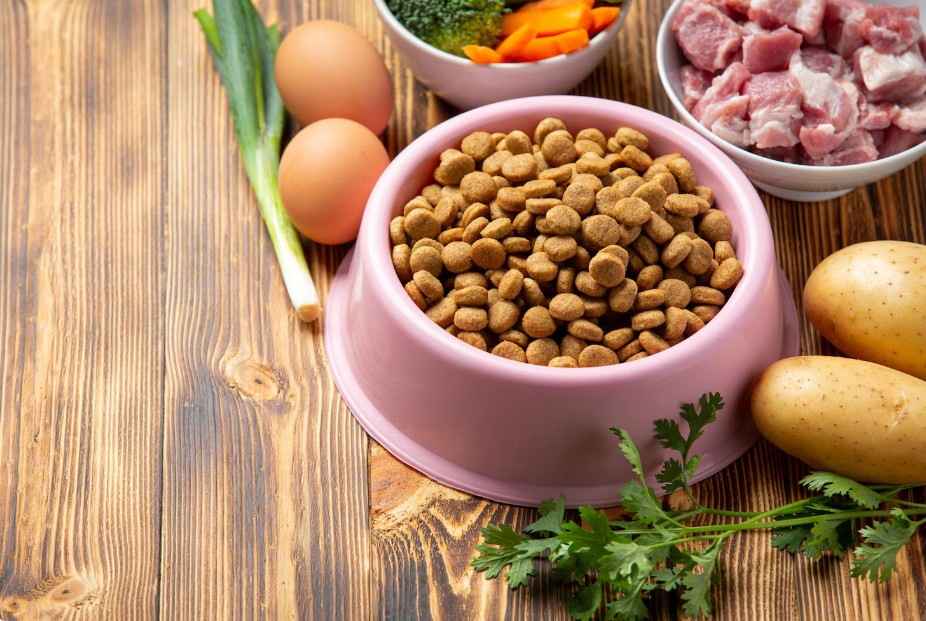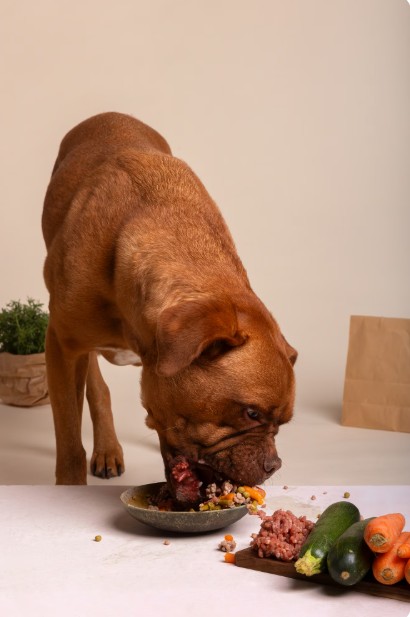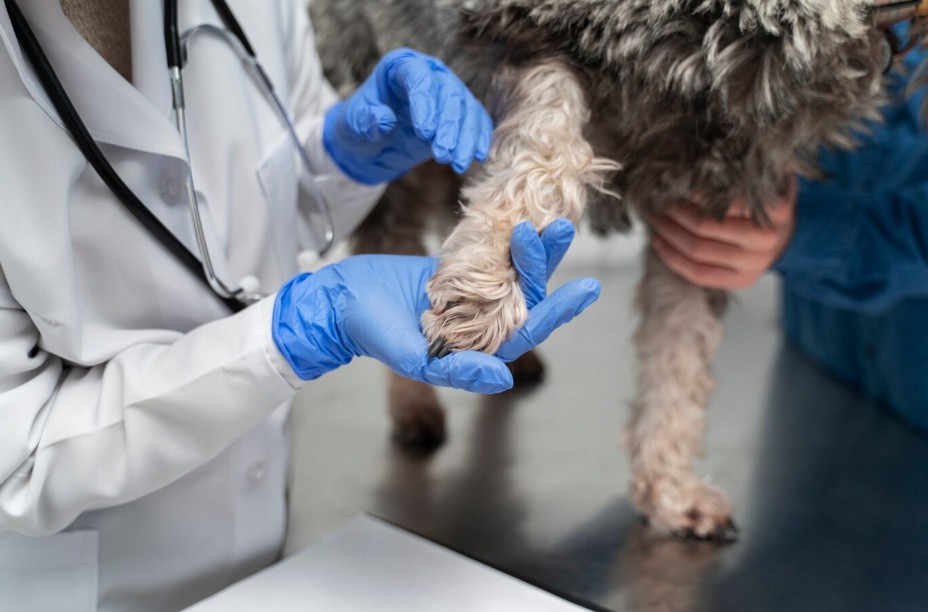With parents becoming more conscious of their dogs’ health and overall well-being, the raw food diet has gained popularity in the canine world. It claims to offer multiple benefits, from shinier coats to better digestion and energy levels. But is a raw diet good for your furry companion? In this blog post, we will explore the pros and cons of the raw diet for dogs to help pet parents make an informed choice. Read more below.
Understanding Raw Diet for Dogs
A raw diet for dogs usually includes:
- Raw muscle meat
- Raw meaty bones
- Organ meats like liver and kidney
- Eggs
- Fresh vegetables and fruits
- Dairy products like plain yogurt (optional)
The purpose of following a raw diet is to mimic the diet of dogs’ wild ancestors and avoid the heavily processed commercial kibble.
The Pros of a Raw Diet for Dogs
1. Better Coat and Skin Health
One of the most noticeable benefits that dog parents notice is the shinier coat and healthier skin of their dogs. Raw meat has high-fat content and fresh proteins, which nourish the dog’s skin inside and out, reducing itching, flakiness, and dryness.
2. Improved Dental Hygiene
Chewing raw meaty bones cleans your dog’s teeth naturally by scraping off plaque and tartar. This freshens breath and reduces dental problems in the long run.
3. Better Energy and Vitality
Many dogs that eat a raw diet have better energy levels and alertness. Some pet parents believe that since raw foods are free from artificial preservatives, fillers, and byproducts that are often found in commercial kibble, dogs can process foods more easily, which eventually improves energy levels.
4. Better Digestion and Smaller Stools
A raw diet is easier for some dogs to digest, particularly if they have certain food sensitivities. Raw diets are typically free from grains and additives, so dogs experience less gas and bloating. Their stools are also firmer, smaller, and less smelly.
5. Weight Management
Raw diets are usually lower in carbohydrates and high in protein, which helps obese dogs shed those extra pounds in a healthy way while maintaining muscle mass.
The Cons of a Raw Diet for Dogs
1. Increased Risks of Bacterial Contamination
Raw meat is a breeding ground for harmful bacteria like E.coli, Salmonella, or Listeria. While dogs are less vulnerable to these than humans, such bacteria can still cause harm. Furthermore, they can pass pathogens to humans through feces, saliva, or contaminated surfaces.
2. Choking and Injury Risks
Bones, particularly cooked ones, can splinter and pose a choking hazard or lead to internal injuries. Raw bones can even lead to cracked teeth or digestive blockages if not given appropriately.
3. Nutritional Imbalance
Keeping your dog on an entirely raw diet requires careful planning. If not designed well, it can lead to nutritional deficiencies or excesses, eventually impacting your dog’s bone health, immune system, or organ function. Raw diets also don’t come with a guaranteed analysis like commercial pet foods, unless professionally formulated.
4. Time-Consuming and Expensive
Preparing a raw diet at home is not just time-consuming but also costly. Pet parents need to ensure that they buy high-quality meat, store it safely to avoid contamination, and prepare balanced meals, all of which require effort and commitment. If you have large breeds or have multiple dogs, these costs can add up quickly.
5. Veterinary Disapproval
Many veterinarians oppose feeding raw diets to dogs, primarily because of health and safety concerns. This is because some raw diets don’t have scientific backing, and not all vets are trained in nutrition, leading to conflicting opinions between pet parents and professionals.
Also Read: https://www.justiceforleia.com/blog/food-and-nutrition-tips-for-a-healthy-dutch-shepherd/
Factors to Consider Before Switching to a Raw Diet
Before you start a raw diet for your furry friend, here are the things to consider:
- Consult Your Vet: Talk to a veterinarian or a pet nutritionist familiar with raw diets to determine your dog’s unique needs, considering existing health conditions.
- Do Your Research: Conduct careful research about raw diets and commercial raw products.
- Start Slowly: Transitioning to a complete raw diet requires time to avoid gastrointestinal upset.
- Maintain Hygiene: Practice safe food handling just as you handle raw meat in your kitchen.
Not all dogs are the same. Remember that the right diet will keep your dog energetic, healthy, and happy.

